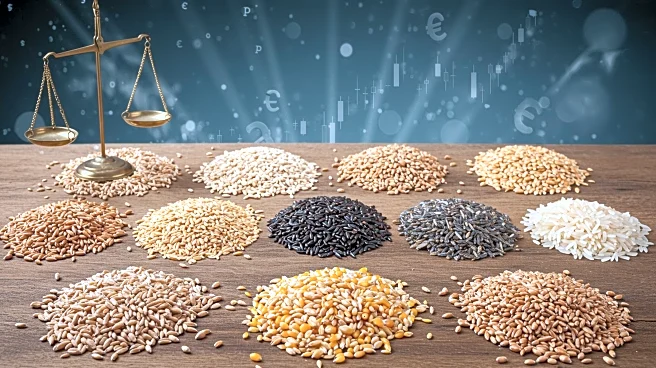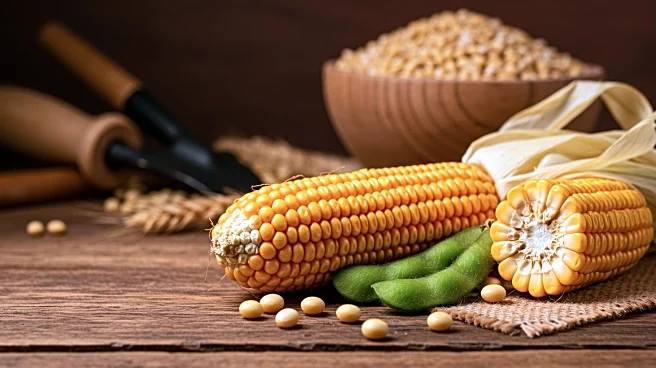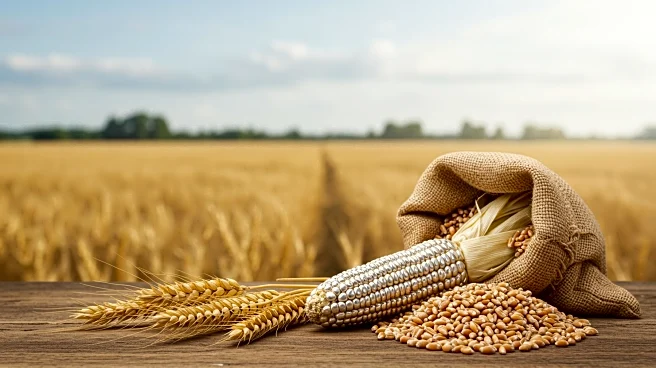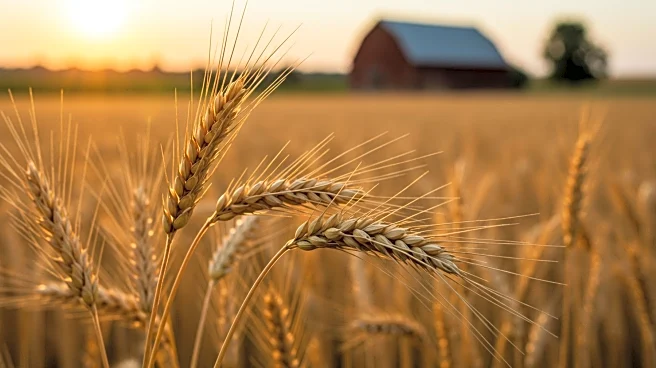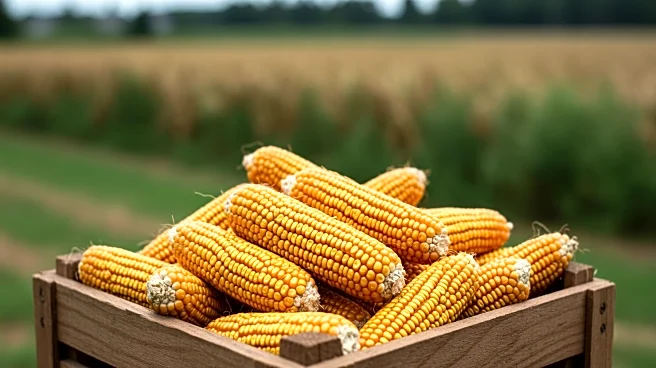What is the story about?
What's Happening?
Grain prices are experiencing mixed trends as traders focus on weather conditions, upcoming crop tours, trade deals, and export sales following the August World Agricultural Supply and Demand Estimates (WASDE) report. December corn prices have risen slightly, while November soybeans and various wheat contracts have also seen modest increases. The market is closely monitoring corn pollination issues, particularly the phenomenon known as tassel wrap, which could impact yields. Additionally, livestock prices are fluctuating, with live cattle and feeder cattle prices declining, while lean hogs have seen a slight increase. The broader financial market is also showing mixed results, with the S&P 500 Index down and the Dow Jones Industrial Average up.
Why It's Important?
The mixed trends in grain prices are significant for U.S. agriculture, as they reflect the ongoing uncertainties in crop yields and market conditions. Weather-related issues, such as tassel wrap, could affect corn production, impacting farmers' income and the agricultural economy. The focus on trade deals and export sales highlights the importance of international markets for U.S. grain producers. Fluctuations in livestock prices also affect farmers' profitability and decision-making. The broader financial market trends indicate potential economic impacts on agriculture-related businesses and investments.
What's Next?
Traders and farmers will continue to monitor weather conditions and the upcoming crop tour for insights into corn pollination issues. The results of trade negotiations and export sales will be crucial in determining future market trends. Farmers may need to adjust their strategies based on yield assessments and market conditions. The financial market's performance could influence investment decisions in the agricultural sector.
AI Generated Content
Do you find this article useful?
